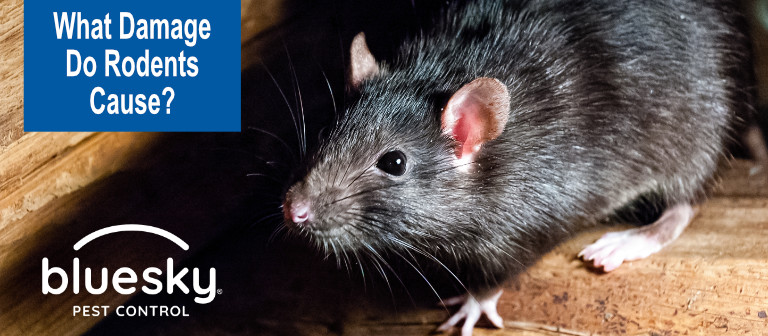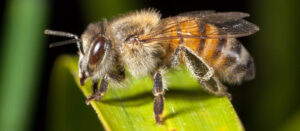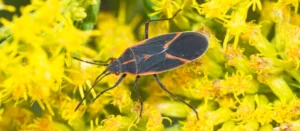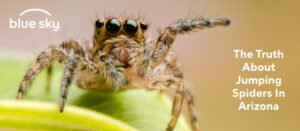$50 OFF New Residential Customers. Learn more
What Sort of Damage Do Rodents Cause?

Rodents are a headache for homeowners across the globe, and Arizona is no exception. From rats and mice to gophers and ground squirrels, these small creatures can cause significant damage to homes, gardens, and other property. Not only do rodents cause structural damage, chewing through walls and electrical wiring, but they spread diseases and contaminate food and water sources too.
If left unchecked, a rodent infestation can spiral out of control, becoming a threat to your well-being and that of your environment. In this post, we’ll take a closer look at some of the most common types of rodents found in Arizona, the damage they can cause, and what you can do to prevent and control these unwanted visitors.
We do rodent control throughout the area and have offices in Phoenix and Gilbert. If you live almost anywhere in the metro area including Mesa, Tempe, Scottsdale, or Peoria, we’ll give you a free quote! Contact us for a free quote!
What Sort of Damage Do Rodents Cause?
Rodents may be small, but their ability to cause big problems should not be underestimated, especially here in Arizona. Rats and mice are among the most common rodents found in the state, and they’re notorious for their destructive tendencies. These little guys can chew through almost anything in their path, causing structural damage to both residential and commercial properties. From walls, insulation, and plumbing, to electrical wiring – nothing is safe! It’s estimated that rats and mice cause around 20% of undetermined house and structure fires in the United States.
And if that’s not enough, rodents can also damage landscaping, gardens, and crops. Gophers and ground squirrels, for example, are notorious for munching on plant roots, which can lead to stunted or dead vegetation.
Most alarming of all, rodents can spread harmful diseases. They can carry a variety of dangerous diseases such as hantavirus, leptospirosis, and salmonella, among others. And to top it off, they can contaminate food and water sources, putting you and your furry friends at risk for illness. Not to mention, a rodent infestation can leave behind some unpleasant odors and unsanitary conditions, leaving you feeling less than fresh.
So, what kind of damage can rodents cause in Arizona, you ask? Brace yourself, here’s a list:
- Structural damage to buildings, walls, and electrical wiring
- Damage to landscaping, gardens, and crops
- Spread of dangerous diseases and contamination of food and water sources
- Unpleasant odors and unsanitary conditions
- Damage to personal belongings, such as clothing, furniture, and other household items.
To prevent and control rodent infestations in Arizona, it is important to take proactive measures, such as sealing up entry points, removing food and water sources, and setting traps. If an infestation is suspected, it is best to contact a professional pest control company that can safely and effectively remove the rodents and prevent further damage.
What are the Signs of a Rodent Infestation?
A rodent infestation is probably the last thing you want in your home. The good news is that there are several signs to look out for that can help you identify a rodent problem before it gets out of hand. Here are some of the most common signs of a rodent infestation:
Droppings
Yuck! Rodent droppings are a sure sign of a rodent infestation. Rat droppings are larger, about half an inch long, dark brown or black, and shaped like a penne noodle. Mouse droppings, on the other hand, are smaller and more pointed, like a grain of rice. Keep an eye out for these little “presents” near food sources, in cupboards, or on countertops.
Gnaw marks
Rats and mice have razor-sharp teeth that they use to gnaw on just about anything, including wood, plastic, metal, and electrical wiring. Gnaw marks on baseboards, doors, and other objects can be a telltale sign of a rodent infestation. Keep an eye out for damaged electrical wiring, which can be a serious fire hazard and should be addressed immediately.
Nesting materials
Rats and mice love to build nests out of paper, fabric, and insulation. If you find shredded paper or fabric in cupboards, drawers, or behind appliances, it’s time to call in the pros.
Scratching noises
Rodents are active at night and can be heard scratching, gnawing, and scurrying around. If you hear scratching noises in your walls or ceilings, it’s a sign that you may have some unwelcome visitors.
Odors
If you notice a musty or stale smell in your home or business, take action right away. It’s likely that rodents have made themselves at home and it’s time to evict them ASAP!
How do Rats and Mice Get into Your Home?
Rats and mice are very adaptable creatures and can enter homes through a variety of entry points. In Arizona, some of the most common ways rats and mice can get into your home include:
- Holes and cracks: Rats and mice can squeeze through very small holes and cracks. They can enter through gaps around pipes, vents, and utility lines. They can also enter through small holes in walls, floors, and ceilings. As crazy as it sounds, Rats can squeeze through a hole the size of a nickel, while mice can squeeze through a hole as small as a dime.
- Open doors and windows: Open doors and windows are one of the most common entry points for rodents. Rats and mice can easily climb up walls, trees, and utility lines to reach open doors and windows, especially if they are attracted by the scent of food or other sources of shelter. Pet doors should also be kept closed when not in use or fitted with a special rodent-proof cover to prevent rodents from using them to gain entry.
- Roof and attic: Rats are excellent climbers and can scale rough surfaces, including walls, trees, and even pipes. They can easily climb up walls and onto your roof, where they can find entry points into your attic through vents or other openings.
- Drainage and sewer systems: As gross as it sounds, rats are also known to use drainage and sewer systems to enter homes. They can easily climb up pipes or find openings in the sewer lines to gain access to your home. This is especially true for homes with older plumbing systems or those that are not well-maintained.
To avoid rats and mice from entering your home, it is crucial to seal off any potential entry points. This includes closing gaps around pipes and vents, patching holes in walls and floors, and ensuring that doors and windows are shut when not in use.
List of Rodents in Arizona
Here is a list of some of the most common rodents found in the Grand Canyon State:
- Roof rats
- House mice
- Pack rats
- Deer mice
- Cotton rats
- Ground squirrels
- Packet gophers
- Voles
Each of these rodents presents its own unique set of challenges when it comes to prevention and control.
How to Identify Common Rodents in Arizona
To identify rodents in Arizona, it’s important to look at their physical characteristics, including their size, body shape, fur color, and tail length. You can also look for specific features, such as large ears or a distinctive musky odor, to help you identify the species of rodent that is present.
House Mouse
The house mouse is a small rodent that is typically between 2-3 inches long, with a tail of a similar length. It has a pointed snout, small eyes, and a round body. The fur of the house mouse is usually gray or brown, and it has a lighter belly. House mice are known for their large ears, and they have a distinctive musky odor.
Roof Rats
Roof rats are usually between 12-16 inches long, including a long, slender body and a tail that is longer than their body and head combined. Roof rats have large, pointed ears and a pointed snout. Their fur is usually gray or black but may be brown as well, with a lighter-colored belly.
Pack Rats
The pack or wood rat is a native species of rodent well adapted to live in the Sonoran Desert. Unfortunately, they also do well in yards and under homes. These rats collect food items like chunks of cactus, shiny or colorful items like plastic, glass, or metal, as well as sticks and such to build large nests called middens. These rodents have large eyes and ears, and most species have a hairy tail and light underside. These rodents are real chewers and frequently build their middens in the engine compartment of vehicles, chewing wires and hoses to make room.
Deer Mice
The deer mouse is a small, slender rodent that is typically between 2-4 inches long, with a tail of a similar length. It has large, round ears, a bicolored hairy tail, and a pointed snout. The fur of the deer mouse is usually gray or brown, with a white belly. Deer mice are known for their large, dark eyes.
What Sort of Damage do Rodents Cause Conclusion
To sum up, rodents pose a serious threat to the safety and well-being of your home, business, or property. At Blue Sky Pest Control, we have been providing reliable rodent control services in Gilbert and Phoenix areas for more than two decades. By utilizing a combination of trapping, exclusion, and sanitation techniques, we can effectively eliminate rodent infestations and prevent future problems.
Our team of experts is dedicated to using eco-friendly and humane pest control solutions that are safe for both humans and pets. We also offer ongoing maintenance services to ensure long-term protection from rodents and other pests. If you’re struggling with a rodent problem, don’t hesitate to contact us at Blue Sky Pest Control to schedule a comprehensive inspection.
Related Posts

Killer Bees in Arizona? Understanding Africanized Bees and How to Coexist Safely
You’ve likely heard the term “killer bees” used to describe Africanized bees in Arizona, but did you know this nickname…

Red & Black Intruders: Meet Arizona’s Boxelder Bugs
Boxelder Bugs in Arizona If you’ve ever stepped outside and spotted a cluster of black-and-red bugs crawling on your porch…

Jumping Spiders in Arizona: Harmless or Hazardous?
Jumping spiders in Arizona might be small, but they can certainly give you a big surprise when they suddenly appear…